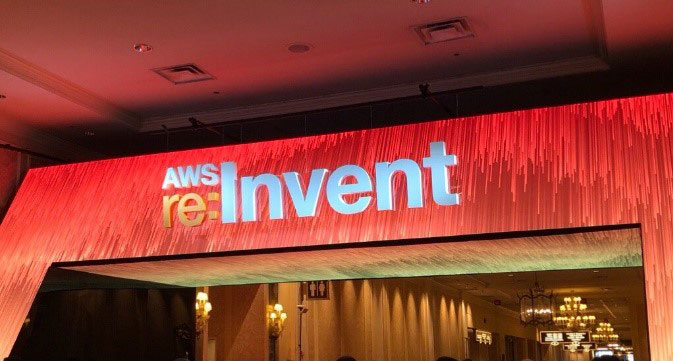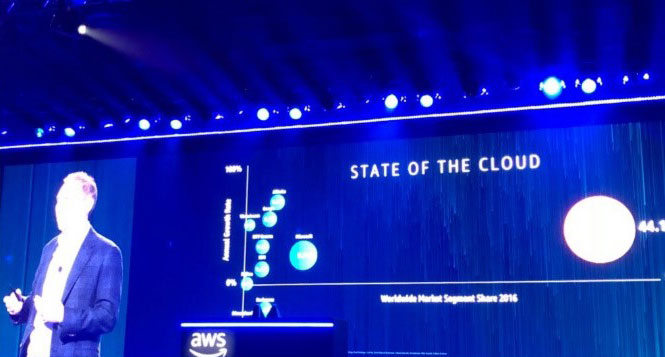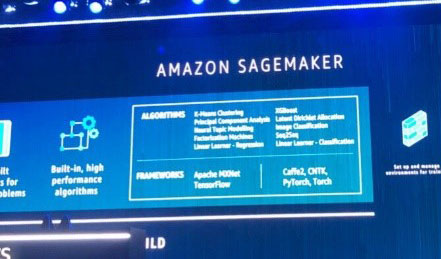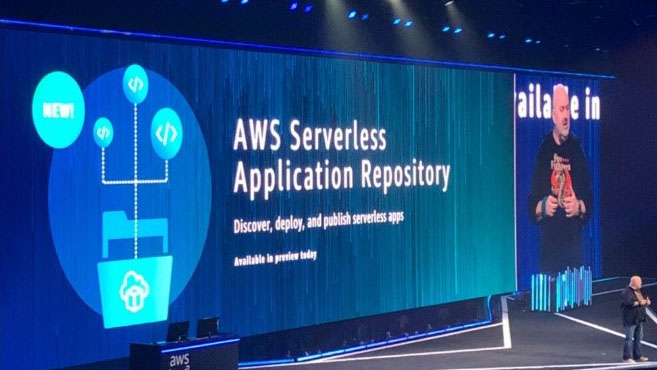Amidst the Thanksgiving festivities and Black Friday frenzy, Amazon Web Services held their annual conference, AWS re:Invent in Las Vegas.

Historically, the event is for developers and cloud enthusiasts but has morphed into the leading worldwide cloud event, for both developers and business leaders. With venues spanning four Las Vegas resort hotel convention halls, over 43,000 attendees soaked up five days of keynotes, announcements, and workshops that will define the pace of cloud innovation and growth for the next year.
For a tech guy like me, the event was outstanding!
This was my first year attending AWS Re:Invent and I was completely blown away by the furious pace of new product announcements, cloud architectural roadmaps, and the sheer dominance of AWS. First let’s start with the size of AWS, operating at a run rate of $18 billion at 40% year-over-year growth. Gartner says that AWS represents 44% of total worldwide cloud infrastructure and service sales, while all the other cloud providers combined do not even represent half of that.
Hundreds of new AWS cloud services were launched at various events throughout the week, including a “Midnight Madness” unveiling. New services launched encompass the areas of Artificial Intelligence (AI), machine learning, deep learning, serverless computing, containers, Internet of Things (IoT), Alexa for Business, and virtual reality (VR), augmented reality (AR), and three-dimensional processing. There were also hundreds of announced enhancements to many core AWS cloud staples, to the delight of engineers, including EC2 compute, Relational Database Service (RDS), VPC Networking, Cloud Trail, and Cloud Formation.

During his strategic technology keynote, AWS CTO Dr. Werner Vogels described the pillars of “21st Century Architectures” for the cloud. Vogels outlined several important themes that will drive changes in the way applications are designed and deployed:
Human-Centric Interactions
Natural human-centric interactions are now becoming a reality through voice-enabled interfaces and stands to be one of the greatest disruptive technical forces. All interfaces developed in the past have been bound by the limitations of machines, especially computing power. These “machine-driven interfaces” such as green screens/terminals, graphical user interfaces, mobile touchscreen interfaces, are all unnatural to humans.
Interfaces of the future will all be human-centric, starting with voice-based interfaces that are conversational, as this is the natural way humans interact. AWS has invested significantly in this field with their Alexa tools, Lex and Polly speech recognition and voice generation services, and now real-time translation and transcription services.
Digital Capital Through Data
Data is the new currency in the digital world said Vogels. What differentiates organizations of the future will be their ability to collect, analyze, and make decisions using all the data at their disposal. This will be realized through greater use of Artificial Intelligence and Machine Learning technologies to dissect incoming data streams in real-time from myriad sources to automatically recognize patterns, anomalies, and determine causality.

This year, AWS launched Sagemaker to make it easier for developers to build and deploy Machine Learning models into their applications. The goal of Sagemaker is to reduce the friction involved with creating Machine Learning models, allowing developers to put greater emphasis on the application instead of the complex technical underpinnings of machine learning.
Serverless Computing
Serverless computing is here to stay. AWS has implemented their vision of serverless computing through their investments in Lambda services making it very easy for developers to publish, monitor, and maintain code at scale.
As a result, an “everything-as-a-service” paradigm is emerging. In this world, developers focus strictly on writing, debugging, and executing code without ever having to put anything on servers or worry about how to scale the infrastructure—all resources (computer, disk, memory, network) are managed and allocated dynamically.

Developers can focus strictly on building their applications, leveraging industry-leading capabilities as needed to solve their problems, delivered in the form of independent, resilient and scalable microservices. A new AWS Serverless Application Repository was also announced permitting the exchange of functions created by a global development community. Ultimately, the goal is to make development even easier and faster.
Security is Everyone’s Job
No strategic cloud keynote would be complete without a discussion on security. AWS continues to make it easier to achieve total encryption of cloud assets. Gone are the days of worrying about the impact of data encryption on performance, managing key stores, and refreshing them across services, AWS makes it seamless to encrypt all data at rest and in-transit through a click of a button. As Vogels asserted, encryption is the only way to ensure that you are the only one who has access to your data. It is not optional anymore and there is really no excuse not to use it.
Also, a robust set of managed services are available to audit and track access to all resources down to the API level. AWS has also launched their new GuardDuty service to enable real-time detection of potentially dangerous activity based on indicators of compromise such as transmission of data to known bad actors. Best of all, this service can be enabled through a few clicks and scales along with usage growth.
Not knowing what exactly to expect, I found AWS Re:Invent to be enlightening and empowering. For developers, the seemingly endless buffet of cloud services offered by AWS opens the door to an array of possibilities.
AWS has certainly lived up to the philosophy of Amazon founder Jeff Bezos as outlined in his original letter to shareholders in 1997:
It is best to hold on to “day 1” for as long as possible and resist the idea that “day 2” has arrived. “Day 2 is stasis. Followed by irrelevance. Followed by excruciating, painful decline. Followed by death. And that is why it is always Day 1.”






